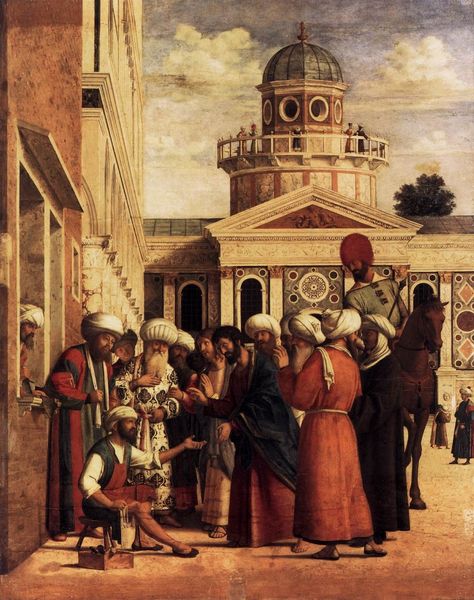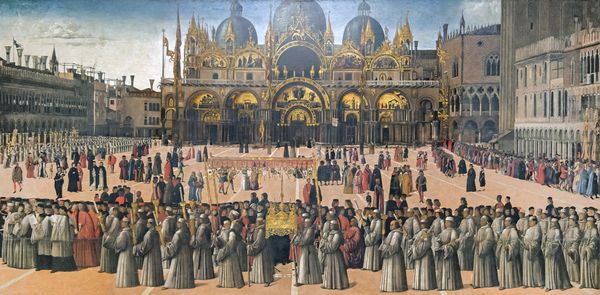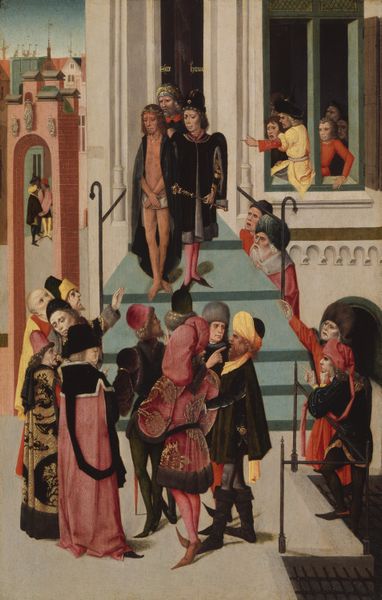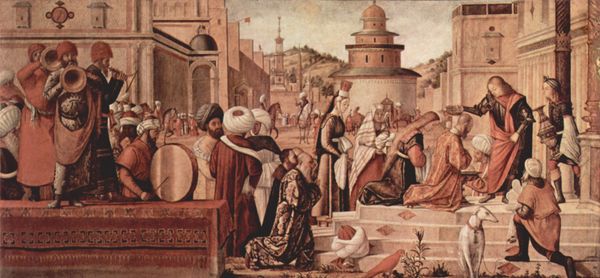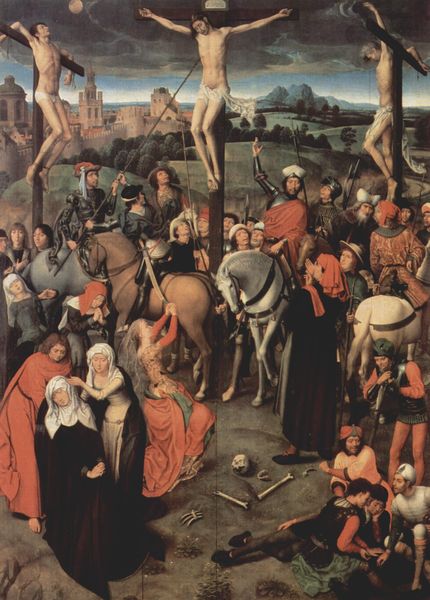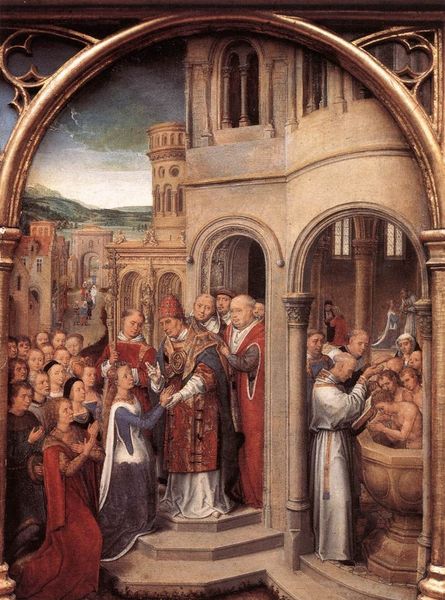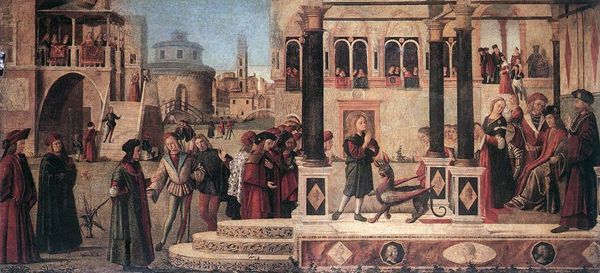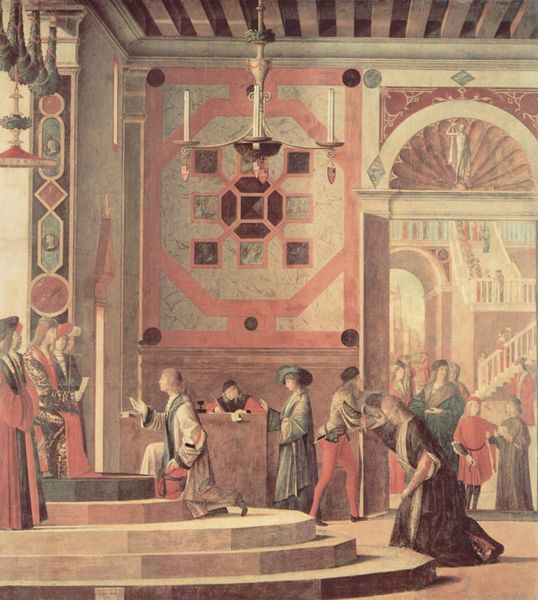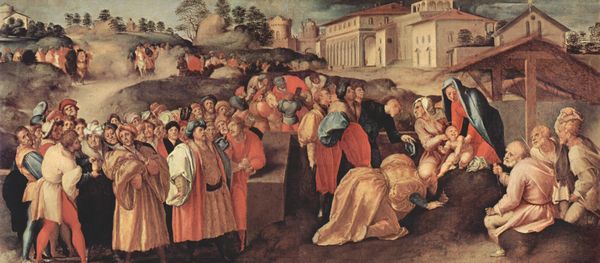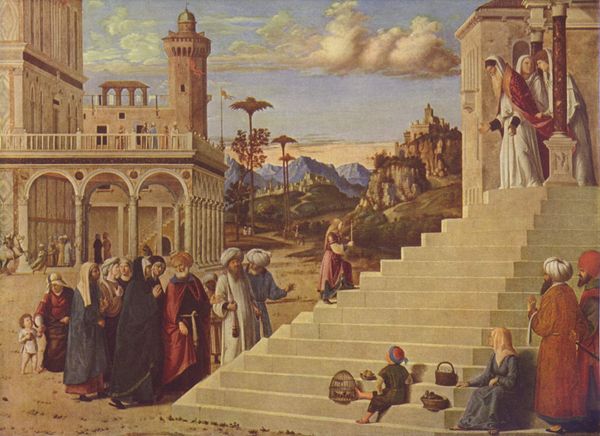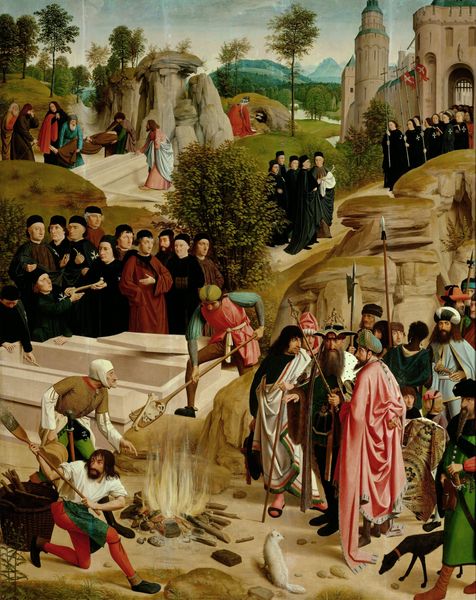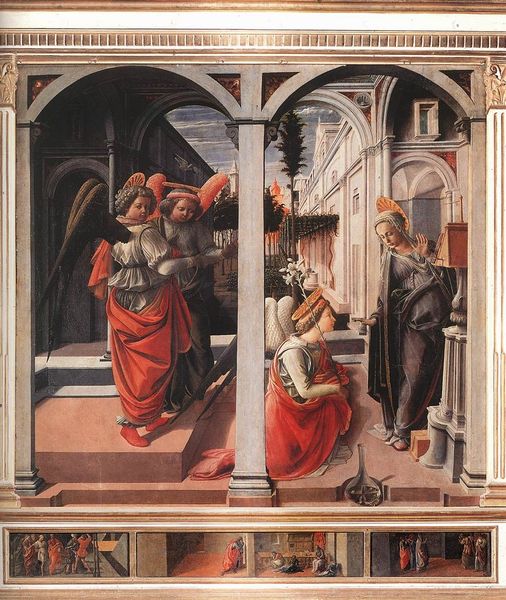
painting, oil-paint
#
narrative-art
#
painting
#
oil-paint
#
landscape
#
genre-painting
#
italian-renaissance
Dimensions: 147 x 172 cm
Copyright: Public domain
Editor: So, this is Vittore Carpaccio's "Debate of St. Stephen," painted in 1514. It's an oil painting, and there’s so much going on. It has this almost stage-like composition, with many figures, and all those Renaissance architectural details in the backdrop. What is your perspective on this work? Curator: The public role of paintings like this in Renaissance Venice is fascinating. Notice how Carpaccio sets this debate within an idealized, almost theatrical version of the city itself. That space between the event and the real location shaped the perception of power. He seems interested in the performance of intellectual authority, in the context of this burgeoning civic identity, does not it? Editor: Definitely. It’s almost like he is deliberately constructing an image of sophisticated Venetian society. You've got the architecture and the scholars prominently displayed. Is it meant to project a specific message to its intended audience? Curator: Exactly! Carpaccio would've created this with the audience keenly in mind. It’s for the Scuole, religious confraternities in Venice that were central to expressing social standing and civic order. What strikes you most about the way these figures interact? Editor: There's a clear separation in how the scene is organized between who's speaking, listening, or participating. I wonder, was this separation present at similar events held in Venice? Curator: Possibly, but notice, also, how he carefully differentiates these participants with details in dress and presentation to assert who holds power and which citizens were afforded authority. To paint that scene would suggest the painting holds sway to instruct audiences to the values of the period and the public image Venice wished to assert. Editor: That makes a lot of sense. Now, I see this piece less as a depiction of history, and more as an assertion of authority. Thanks for the guidance! Curator: Glad to bring a new viewpoint; thinking about context truly changes everything about how one engages with artwork.
Comments
No comments
Be the first to comment and join the conversation on the ultimate creative platform.
